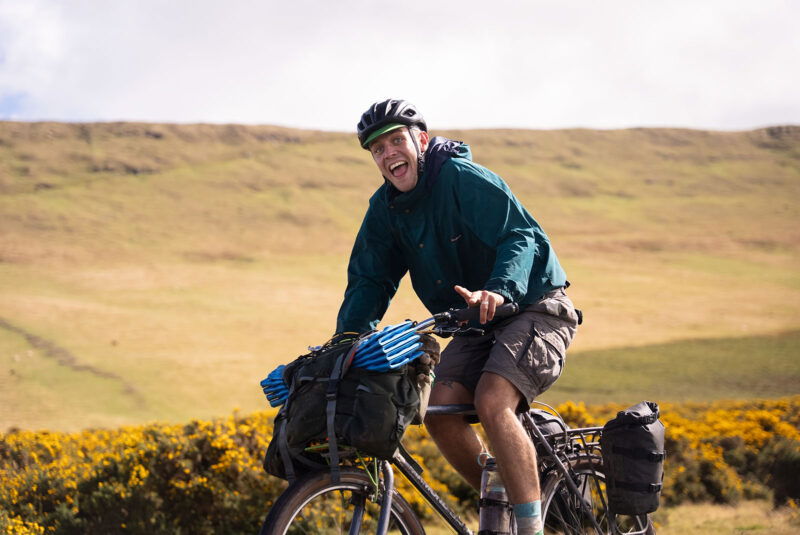1,954 kilometres. 27,938 meters of elevation. Zero support. Pure adventure through Kyrgyzstan’s wildly rugged terrain. In this article we recap this year’s race and speak with one of our own Tailfin team members, Adam Palin, who took 5th place at this year’s event, to find out how it went.
New to the event? Check out our Silk Road Mountain Race event introduction
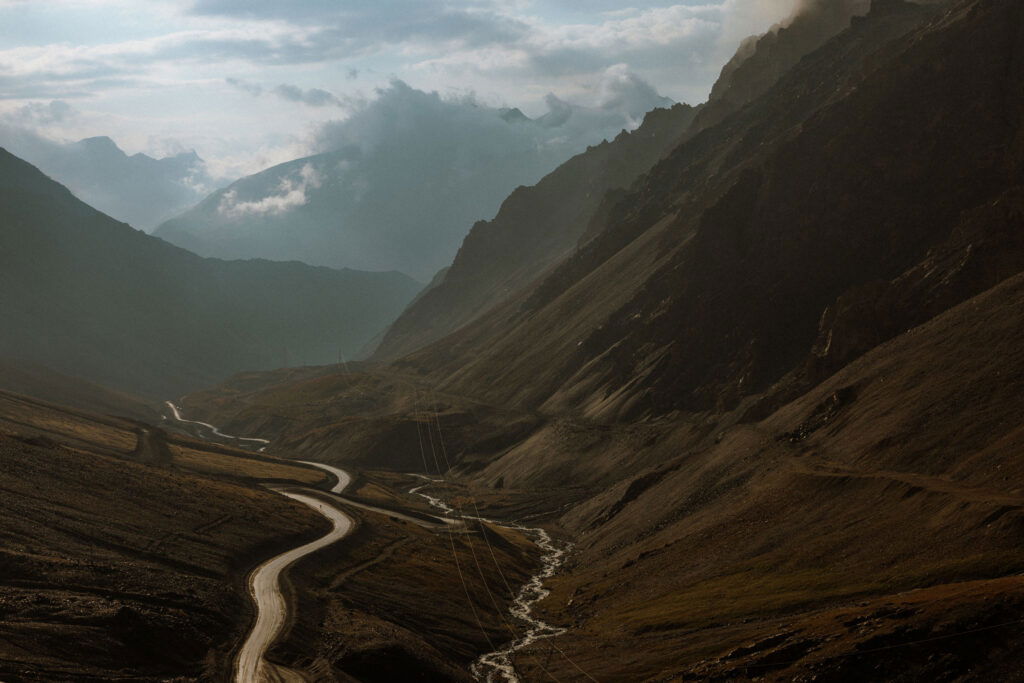
A Race Like No Other
The Silk Road Mountain Race is a fixed route, unsupported, single-stage cycling race through the mountains of Kyrgyzstan. The clock does not stop, and there are no prizes. It follows gravel, single- and double-track roads, and old Soviet roads that have long been forgotten and fallen into disrepair. This isn’t your typical weekend race – it’s an exercise in self-reliance, mental fortitude, and pure adventure.
What makes SRMR truly special isn’t just the distance or elevation (though both are formidable). It’s the environment. Kyrgyzstan offers one of the wildest and most inhospitable environments for a bikepacking race with its often harsh and unpredictable mountain weather, contrasted with the warmth of the local hospitality. Riders face everything from scorching 36°C desert heat to bone-chilling -10°C mountain passes, often in the same day.
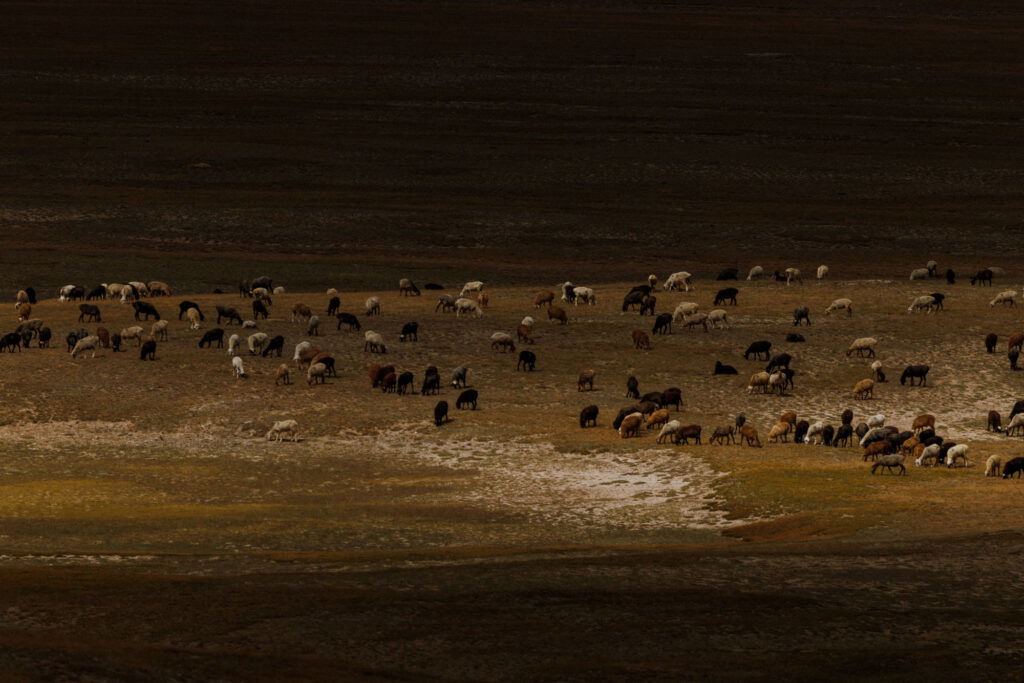
This Year’s Epic Route
The seventh edition of SRMR took things to another level. 729 kilometres have never featured in the race before, while the rest are some of the best sections from previous years with very few transitions. It’s the longest route with the least pavement ever, but at the same time there is less elevation gain than in previous editions.
The route included some of Kyrgyzstan’s most remote and stunning locations: Lenin Peak, the ethereal Lake Kel-Suu, and the challenging Tosor, Zhuku, and Arabel passes. But perhaps the most talked-about feature was the notorious 30-kilometre hike-a-bike section that appeared just a few hundred kilometres in, requiring riders to spend roughly 24 hours pushing their bikes through terrain that would challenge even the most seasoned mountaineers.
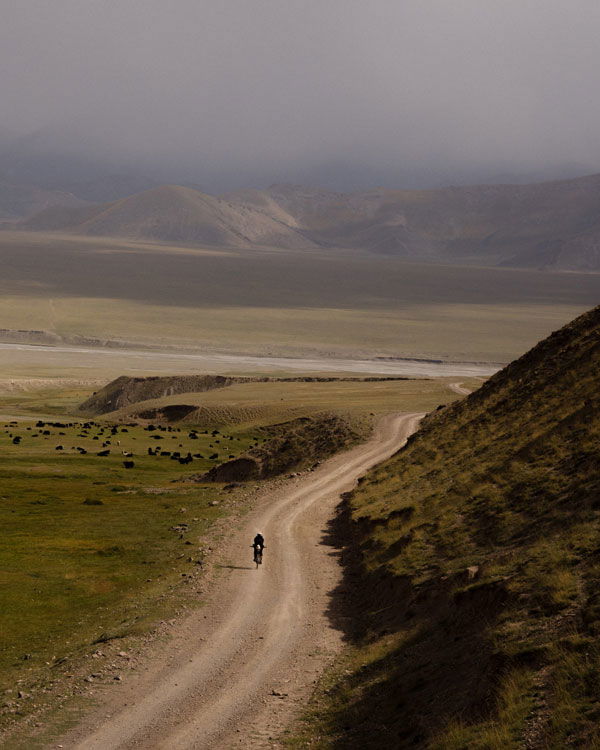
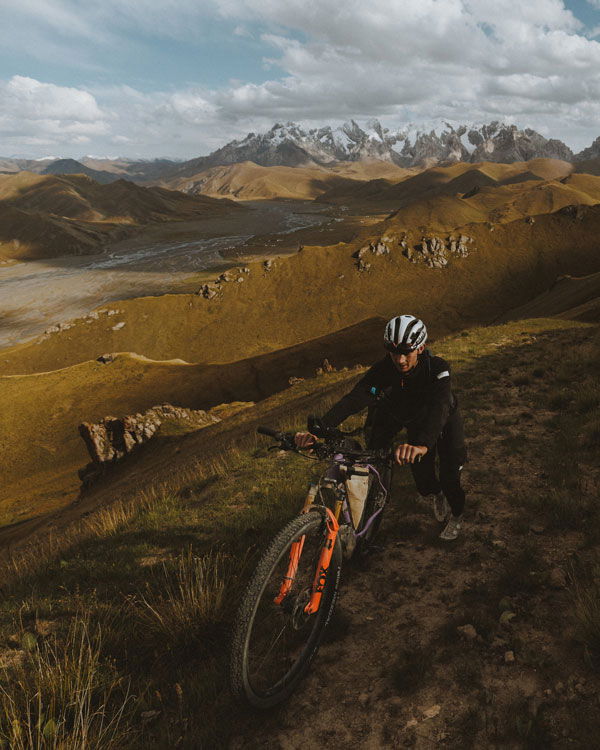
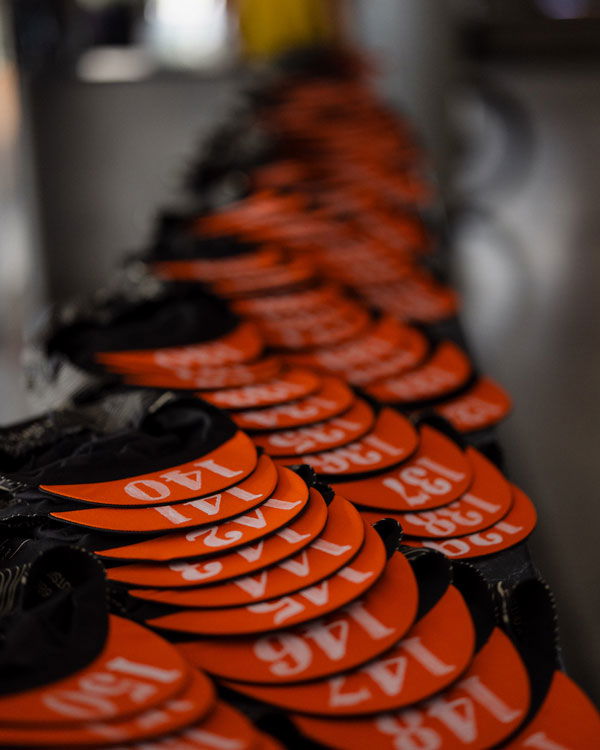
The Numbers Game
Nearly 240 riders lined up for the start, representing the global nature of this adventure. 270 athletes from 41 countries rode 1,954 kilometres from Osh to Karakol along the country’s most picturesque and hard-to-reach routes. Among them were 13 local Kyrgyz riders, bringing valuable home-field advantage to the mix.
A Race of Attrition at the Front
The 2025 edition proved to be a challenging year for even the most experienced ultra-distance riders. Robin took the overall victory, benefiting from his Swiss-based training at altitude throughout the year.
The race proved particularly gruelling for many of the pre-race favourites. Alex McCormack secured second place despite battling illness for over half the route and dealing with multiple mechanical setbacks. His performance was especially notable given he’d already completed both the Atlas and Hellenic Mountain Races earlier in the season – a punishing schedule that takes a serious toll on the body.
The final podium spot saw a close battle in the closing kilometres between Miron Golfman and Chris Burkard. Golfman ultimately claimed third, rolling into Karakol just under eight days after starting, though the harsh weather conditions had taken their toll – he’d completely lost his voice by the finish line.
In the women’s field, Meaghan Hackinen rode consistently throughout to take the win, finishing 10th overall and achieving the second-fastest combined time across all three Mountain Races in a single year. Her approach of maintaining daily updates while staying positive made her a compelling rider to follow. Sami Sauri claimed second despite equipment failures. Leanne Bentley rounded out the women’s podium, showing impressive resilience after starting the race while recovering from illness and managing an ongoing achilles issue.
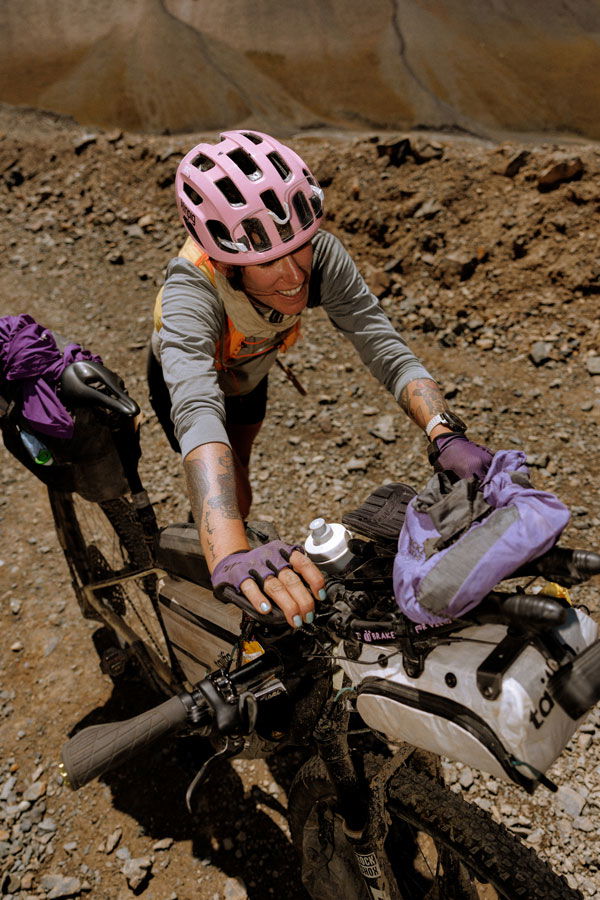
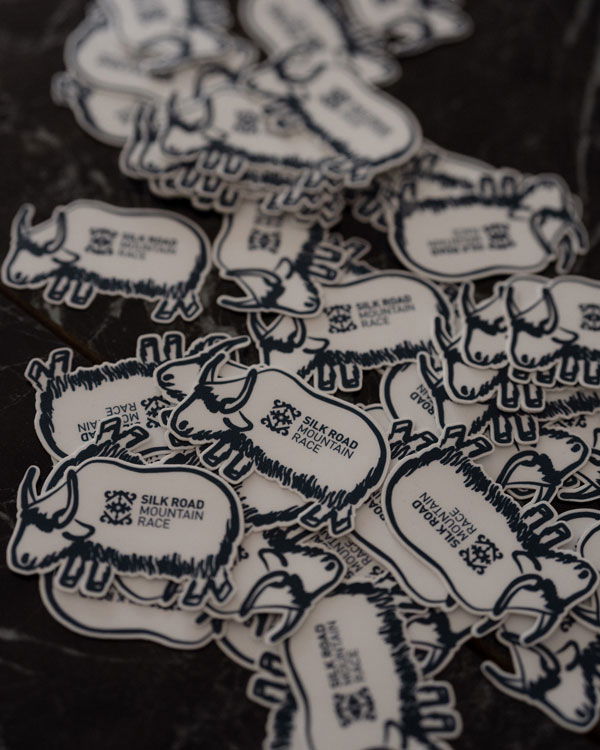
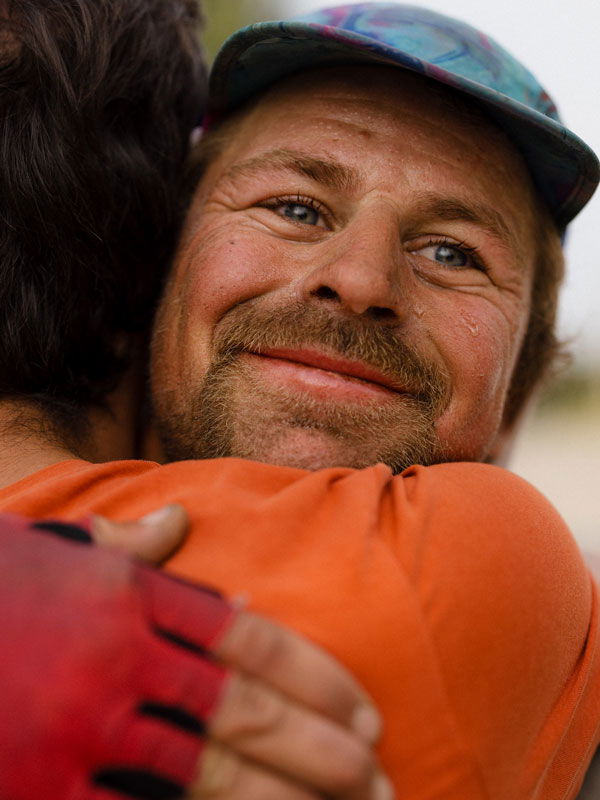
Where Tailfin Kit Dominated
We’re incredibly proud to see how our gear performed in these extreme conditions. Among the bag manufacturers, Tailfin has now finally taken the lead this year, ahead of Apidura. Both British brands were still neck and neck last year. Now Tailfin leads with more than 40%. But it wasn’t just our bags that riders trusted – the Tailfin Aeropack has also secured a permanent place in the field: 33% rely on the Tailfin Rea System. Last year it was 22%.
When riders are pushing themselves to the absolute limit, gear failure isn’t just inconvenient – it can be dangerous. Seeing so many riders choose Tailfin for this ultimate test validates everything we believe about creating equipment that not only performs but excels when it matters most.
Innovation Through Adversity
Races like SRMR don’t just test riders – they test equipment in ways that no laboratory ever could. Every piece of gear faces the ultimate stress test: Temperatures range from 36 degrees Celsius to -10 degrees Celsius. Add altitude, sleep deprivation, and the constant vibration of rough terrain, and you’ve got conditions that separate the truly functional from the merely adequate.
This is why we obsess about every detail in our design process. When a rider navigates a treacherous descent at 3,000 meters of elevation after riding for 16 hours straight, they need to know their gear will work flawlessly. We are dedicated to crafting the world’s finest bike equipment.
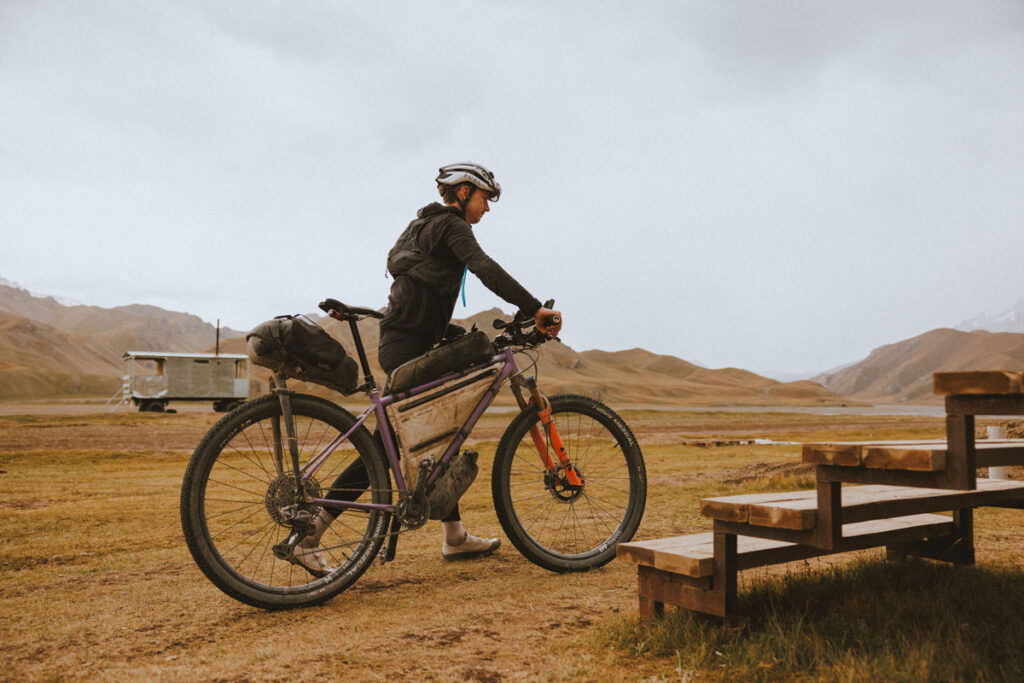
The Face of Adventure
One inspiring trend we noticed this year is that the average age has risen from 37.5 years to 41. One reason is the high proportion of participants aged 50 and above – no fewer than seven riders are 50 years old or older.
The diversity of the field – from seasoned ultra-distance legends to first-time SRMR participants – shows that this race attracts people who understand something fundamental: the best adventures happen when you step well outside your comfort zone.
Words from one of our own
Introduce yourself and what you do at Tailfin
I’m Adam. I’m part of the Customer Service team at Tailfin.
What made you want to race the Silk Road Mountain Race?
I’ve been racing ultras now for 4 years. You always look at these big races and dream of completing them. The pure extremity of the environment and terrain drew me in.
What was you’re highest point and to mirror that, what was your lowest?
My highest point was descending off the Arabel Plateau. From 3800m down to 1600m. It was the end of a long two days of limited resupply and communication with loved ones.
Sadly my lowest point was in the last few hours of the race. I had descended off the last pass and as the sun set I became very delirious due to sleep deprivation. I had feelings of de ja vu and had to stop a few times to take naps. It didn’t give me the finish satisfaction after such an incredible week of racing.
Tell us about how the race unfolded, did you achieve the result you set out for?
I came with the goal of being near the front. Top 5 was a goal I had of many. Finishing was top priority though. I was new to riding at altitude so I didn’t know how my body would react. I definitely suffered at times but I never felt I had more to give so was always on the edge. For a lot of firsts I’m super proud of this result.
We know that the food can be hard to come by. Be honest, how many chocolate bars did you eat?
That I can tell you. I had around 8-10 chocolate bars a day and many many ice creams. Maybe around 20 in total. I wasn’t risking getting sick so if it wasn’t in a packet I wasn’t touching it. The highlight was packaged baguettes which you could buy in local shops. Very processed but as real as you could get. I would eat some cooked meals at the checkpoints.



You smashed the race this year, is there still unfinished business, will you be back on the Silk Road?
During the race I swore I would finish but never return. However the pain fades and depending on the course in the years to come I would like to return and build on what’ve learnt. Kygyrzstan is just so beautiful and the experience was incredibly raw.
How much work did you do to dial in your setup? And, would you change anything next time?
I have my setup pretty dialled nowadays. There are always some changes though and I would take wider tyres next time and a shelter which is quicker to put up. Of course getting to test new bags means things can change which is always exciting.
Beyond the Finish Line
Riders experienced the natural beauty of Kyrgyzstan and the warmth and generosity of its people. Beyond the physical challenge, many found the race offered something different – a chance to test themselves in unfamiliar territory and connect with a landscape few will ever see.
For many riders, crossing the finish line in Karakol was as much about completing the distance as it was about the competition itself.
